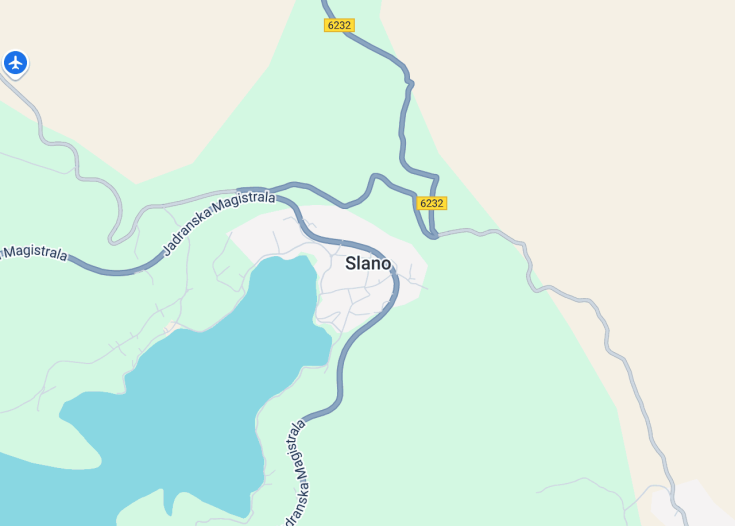Slano is a serene coastal village located in the Dubrovnik-Neretva County of Croatia, offering a perfect blend of historical richness and modern tranquility. Nestled in a bay along the picturesque Adriatic coast, Slano is an enchanting retreat for travelers seeking peace away from the bustling tourist spots. The village is steeped in history, with landmarks dating back to the Roman times, and provides a gateway to explore the beautiful Elaphiti Islands. Its calm waters and scenic landscapes make it a favored spot for yachting and sailing, while the local cuisine, featuring fresh seafood and regional wines, promises a delightful gastronomic experience.
To truly enjoy Slano, consider visiting in the late spring or early autumn when the weather is most favorable and the village is less crowded, offering a more intimate experience with the local culture and nature.
Don’t miss exploring the nearby olive groves and vineyards for a taste of Slano’s agricultural heritage, and to sample some locally produced olive oil and wines, which are exquisite.
Top things to do & see in Slano
Select the following sights and activities to discover best tickets and tours available in Slano.
Slano: A Serene Getaway by the Sea
| Country | Croatia |
| Time in Slano | GMT+1 |
| Language spoken | Croatian |
| Population | 579 (Data from the Croatian Bureau of Statistics, 2021) |
| Currency | Croatian Kuna (HRK) |
| Airports |
|
Slano is a charming coastal village located on the Adriatic Sea in Croatia, known for its striking landscapes, rich history, and tranquil beaches. Nestled in a beautiful bay, Slano provides a perfect retreat for those seeking peace and natural beauty away from the hustle and bustle of the more tourist-heavy spots in Croatia.
Where is Slano?
Slano is situated along the coastline of Dubrovnik-Neretva County, Croatia, nestled in a picturesque bay facing the Adriatic Sea.
Distances:
| Route | Distance by car | Time by car |
|---|---|---|
| Zagreb to Slano | 290 mi (465 km) | Approx. 5 hours |
| Split to Slano | 130 mi (210 km) | Approx. 2 hours 30 minutes |
| Dubrovnik to Slano | 21 mi (34 km) | Approx. 30 minutes |
What is Slano famous for?
Slano is renowned for its scenic bay, historical sites, including the ancient Church of St. Blaise, and the splendid pebble beaches that stretch along its coastline, promising a peaceful retreat for visitors.
History
Ancient Times to Medieval Era
Slano’s history traces back to the times when it was frequented by the Illyrians and later the Romans, who appreciated its strategic coastal location. The natural bay of Slano provided a perfect shelter for ships, which made it a significant maritime hub. Following the fall of the Roman Empire, Slano came under the rule of various powers, but most notably, it flourished under the Republic of Ragusa (Dubrovnik) starting in the 14th century. The Ragusans fortified the village and utilized its harbor for trade and military purposes.
15th Century to 19th Century
During the Renaissance period, many aristocratic Dubrovnik families built summer manors in Slano, attracted by the natural beauty and the tranquility of the area. This era saw Slano develop agriculturally, with olive and almond trees being prominent. However, the late 18th century brought challenges as the Republic of Ragusa fell to the Napoleonic Wars. Slano faced a period of uncertainty as it was passed between empires before finally becoming part of the Austro-Hungarian Empire in the 19th century which led to modernization and development initiatives, including the building of better roads and improvements in agriculture.
20th Century to Present
The 20th century was a turbulent period for Slano, witnessing both world wars which disrupted daily life and stifled development. After World War II, Slano became part of the Socialist Federal Republic of Yugoslavia. During this time, it saw industrial growth, especially in tourism and maritime sectors. The Croatian War of Independence in the early 1990s brought significant damage to the region, but recovery was swift. Today, Slano is part of a sovereign Croatia, embracing its historical heritage while developing into a charming tourist destination, known for its crystal-clear waters, historic sites, and tranquil ambiance.
Visit Slano
What to See and Do in Slano
Slano, an alluring village on the Adriatic coast, offers a blend of historic and natural attractions. Visitors can explore the remnants of ancient walls and the medieval church of St. Blaise. The lush olive groves and vineyards surrounding the village are perfect for leisurely strolls or bike rides. For beach lovers, Slano Bay boasts a beautiful pebble beach ideal for swimming and sunbathing. Cultural enthusiasts will appreciate the summer villas of Dubrovnik’s noble families scattered around the village.
Festivals and Events in Slano
Slano hosts a variety of cultural and recreational events throughout the year. Highlights include the Slano Summer Festival, featuring music, dance, and local cuisine during July and August. The Olive Harvest Festival in October celebrates the region’s olive-picking season with traditional music, food, and crafts, providing insight into local customs and lifestyles.
Best Time to Visit Slano
The optimal time to visit Slano is between late spring and early autumn, particularly from May to October. During these months, the weather is warm and sunny, ideal for outdoor activities and enjoying the beach. The offseason, while quieter, can be cooler and less suitable for water-based activities.
Is Slano Worth Visiting?
Slano is indeed worth visiting, especially for those who appreciate a mix of history, culture, and natural beauty. This quaint village offers a tranquil escape from busier tourist spots, while still providing plenty of attractions and activities. Its historical sites, beautiful landscapes, and inviting beaches make Slano a perfect spot for both relaxation and exploration. The local events also add a unique charm, engaging visitors in the traditional Croatian way of life.










